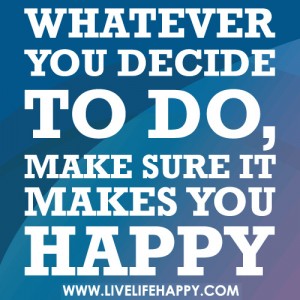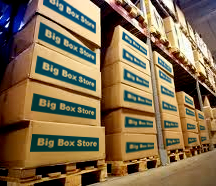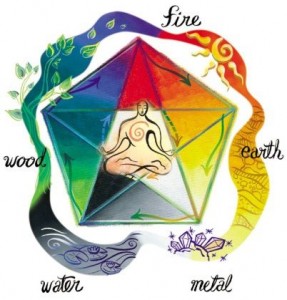 Why Haven’t I Done This Before?
Why Haven’t I Done This Before?
Are you asking yourself any of these questions? What does this mean?
The concept of shopping in your closet is- Know what you own, Create options you love, Wear what looks good & Makes you feel good, and Add what you are missing.
Simply, it’s seeing what you have, distinguishing what your patterns are, coordinating items, and getting into action!
SUGGESTION: Have a pen & paper ready to record your observations
It’s time to get into your closet. If you can’t manage that, then you should clear a path into it, maybe with some professional help from an organizer!
1. Observe it first. Then, if possible group like items together…pants with pants, sweaters with sweaters and so on.
2. Notice how many of the same item you have in the same color ( sound familiar!) For example- You notice you have 12 black turtlenecks? – couldn’t find them and purchased more? Did you get them on sale? Are they in your favorite color or colors?
3. Next is to take an inventory of what’s in every category. First it’s a broad look. This will inform you of what’s missing. Also you are gathering information about your colors, styles you tend to buy, styles you prefer to wear, and the correct size that fits now! At this point, you can check sizes and conditions of the garments. Pull out soiled, damaged, items for repair, outdated, and items you don’t feel good in and are the incorrect size. Now is the time to purge and bag the items “Leaving” your closet (if you haven’t done so already!) Look for what stands out, like the items you like or don’t like and the items that fit. All the items you want from each category that remain will become your “core” wardrobe.
4. At this point you will have noticed your buying patterns. Ask yourself questions, because this might help you reveal the “why’s” to what you have in your closet. Now you can make some conscious choices. It would benefit you to stay open to this exercise!
5. This is the time you can start coordinating outfits. You can split up sets and use items separately. You may have purged a part of a set which is fine! If this isn’t your forte then you may consider getting some help from a wardrobe consultant/organizer.
You can have a lot of fun creating new outfits and blending pieces together. At this point you may need to list the colors or items missing for these coordinates/outfits. This will become your new shopping list. Start using your new insights. These insights about your buying habits will help you from buying items that you don’t need or want.
Using this method will result in some new fresh looks for the season. Generally using items you already had that either you couldn’t see, find or realize could work with something else. This might improve your impulse buying! Also another outcome of this will be, that you have cleared your closet space and can practice staying organized!
Have some fun with this and let your creative juices flow!!
Kids May Have Curious George, But Adults Now Have Curious Accountability!
Like Curious George, who stimulates children’s natural curiosity about the world around them, Curious Accountability offers adults a new perspective for tasks associated with getting organized; one where they embark on an exciting journey of self discovery and realized goals. This methodology turns the act of getting organized into a skill building activity. Personal ‘aha’ moments promote longer lasting effects for those who want to get organized and remain organized over time.
At the National Association of Professional Organizers conference in New Orleans last month, Casey Moore and Cameron Gott introduced the concept of Curious Accountability. They defined this concept as “a positive evaluation process based on respect and trust that focuses solely on learning from actions (or inaction). The learning in turn, raises the awareness necessary for developing new skills and tools and achieving goals. Applied consistently over time, Curious Accountability increases self-knowledge and resilience and fosters effective behavior change”.
The word accountability, for many, has a negative connotation — answering to another or a feeling of being punished. In this Curious Accountability model, the focus is on learning and self discovery. Whether the task was accomplished or not, isn’t important. What is important is what the person learns from the process of doing or not doing the task.
Curious Accountability requires a contextual shift in one’s thinking to bring unwanted habits that promote disorganization into the lime light without the usual cloak of shame and blame. If we apply the same kind of curiosity, inquiry, and learning a scientist brings to their fieldwork — or Curious George brings to his daily adventures — we can free ourselves of the ever present good, bad, right or wrong rating systems we apply to our actions and efforts. We can, instead, view our actions, results, and even the “no results” through the filter of learning and exploration. Over time, we are left better problem solvers, in action, and moving towards our goals with more joy, confidence, and ease.
In this learning-focused approach, one might ask themselves at the end of a task or project (accomplished or not):
What did I learn?
What is the value of this learning to the task or overall goal?
What hurdles or “obstacles to overcome” did I discover?
Questions like these are good for illuminating what is important to us moving forward in our organizing endeavors. Should you “get stuck” in this new model, the role of the professional organizer, practiced in this technique, is to be an/a:
Active Listener – listening for the client’s goals and aspirations — long and short term
Cheerleader — keeping the person on track
Mirror – reflecting (not judging) how effective their actions are
Reminder for Self Awareness – let client’s experience inform their next actions
Involved Learner – redefine success
A professional organizer can summarize the learning as it relates to your over all goal or project leaving you ready, prepared, and empowered for your next week of Curious Accountability.
Kids may have Curious George to reveal the magic of curiosity, but adults now have Curious Accountability to propel them forward toward their goals with greater ease.
| Ouch! What just fell on my head? Maybe it’s time to organize your clothes closet! To start the process, label containers Donate, Recycle, Homeless (for anything that doesn’t belong in the closet) and Unsure (use this one sparingly). Use a garbage bag for trash. Follow these 13 easy tips: 1. Have a specific objective (for example — be able to store clothing and accessories without overcrowding so you can quickly put things away). 2. Plan the space and assign homes for your things. 3. Pick a corner of the closet to start decluttering. If there is too much stuff to access the closet, start with what’s in front of you. 4. Grab the first item and decide where it goes, either in one of the containers or in its home in the closet. Continue with things on the floor, shelves, and hanging on the rod until your objective is met. 5. Eliminate everything that is not worn (for whatever reason), torn (mend it), stained (clean it), doesn’t fit (donate it) or beyond repair (toss it). If clothes are too small and only if it’s very likely you will fit into and wear them again, store them in a labeled bin. Otherwise they are just daily negative reinforcement. To save space, pack the too-small things in labeled bins and store them elsewhere. 6. Group similar items (short tops, long tops pants, suits) in an order that makes sense to you. To create a rainbow effect, group by color. 7. If it’s clutter, it goes. I define clutter as anything that is not useful or enjoyable and takes up space without serving any real purpose. 8. To contain groups of items, use organizing products for shoes, sweaters, handbags and so on. See Scarf Organizer (below). 9. Decluttering is just a first step. To be organized, it’s crucial to create and follow systems, habits and rules to live by (as I call them) that work for you. 10. Use vertical space above the rod for storage, raise the rod for more accessible floor storage, and see the Closet Rod Doubler (below) to double hanging space. 11. Do not take back anything you removed! Take out the trash, bring donations to your favorite charity and get your tax-deductible receipt, and distribute things in the Homeless box. 12. Maintenance is the key to long-term success so immediately return things to their homes. 13. Reward yourself with a special treat for a job well done! Need more space for hanging clothes? No problem. The closet rod doubler (shown) simply hangs from the main rod, instantly doubling that hanging space. It’s super-easy to install; no tools are necessary. Both height and width are adjustable. This one sells for $19.99 at The Container Store. Click on (or copy and paste the link in your browser): http://www.containerstore.com/shop?productId=10015612&N=&Ns=p_sort_default|0&Ntt=closet+doubler. Closet Rod Doubler Scarf Organizer Scarves are in vogue this spring. If you are unhappy with how yours are stored, this scarf organizer makes it simple and colorful to look at. Organize them by designer, color, size, or material. Try this product for jewelry and belts and, for the guys’ ties. You can buy this one for $5.99 at The Container Store. Click on (or copy and paste the link in your browser): http://www.containerstore.com/shop?productId=10000136&N=&Ns=p_sort_default|0&Ntt=scarf+organizer. Now that it’s so simple to find things and return them where they belong — and everything looks great too — maybe you’ll be motivated to organize the rest of your closets!
|
 A client and I were talking last week about the “hazards” of having too much storage space. If there is room to store items you may or may not use in the future, the decision to keep or discard can be postponed. For some of us, those decisions have been postponed for 20 years!
A client and I were talking last week about the “hazards” of having too much storage space. If there is room to store items you may or may not use in the future, the decision to keep or discard can be postponed. For some of us, those decisions have been postponed for 20 years!
Before I became a professional organizer, I didn’t fully understand the downside of keeping items I didn’t use or love. I thought that if the house looked nice and I could find what I needed quickly, everything was copacetic. I now know that excess can often create fatigue, shame and embarrassment as well as a lack of focus and clarity.
Here’s where I got in trouble: when I decided to remove an item from my living space and the thought of getting rid of it pulled at my heartstrings, down to the basement it went. Why decide now? There’s plenty of room in the basement! My logic was:
See anything wrong with that thinking? I now have a basement full of stuff (neatly stacked and labeled, of course) that I rarely use. My new logic is:
As I’m learning to let go of anything that doesn’t make my life work better, I’m starting to de-clutter my basement. While I don’t have chunks of time to work on it, I spend an extra five or ten minutes in the basement while doing the laundry and make sure I toss or donate items every single week. In time I’ll get through it all.
I look forward to feeling freer and lighter as I let go of what I don’t use and love.
 I often remark that Sam’s Club, Costco and BJ’s keep me in business. Frequently, the first thing I recommend to my clients is that they reduce their purchases to essential items. I recognize “essential” is a relative concept, but people understand that we often consume needlessly & impulsively. The heart of disorganization often comes from having an abundance of merchandise. We are exhorted to over purchase by all the agencies of mass media. Their business is to encourage spending and our business is to purchase with discretion.
I often remark that Sam’s Club, Costco and BJ’s keep me in business. Frequently, the first thing I recommend to my clients is that they reduce their purchases to essential items. I recognize “essential” is a relative concept, but people understand that we often consume needlessly & impulsively. The heart of disorganization often comes from having an abundance of merchandise. We are exhorted to over purchase by all the agencies of mass media. Their business is to encourage spending and our business is to purchase with discretion.
Purchasing has a complicated physiology; why do rational people over purchase? There are several factors at play here. Mass media is not the only culprit; the availability of credit cards enables people to consume beyond their needs. According to Los Angeles clinical psychologist and wealth consultant James Gottfurcht, PhD, “They’re conditioning people into building debt at a very young, vulnerable age.”
Other major factors that contribute to overspending according to research by Florida State University social psychologist, Roy Baumeister, PhD is too many demands in stressful situations and dealing with difficult relationships.
Finally, the idea that consumerism leads to happiness has proven to be an illusion; according to a post by Rebecca Sato. “Researchers have found that low self-esteem and materialism are not just a correlation, but also a causal relationship where low self esteem increases materialism, and materialism can also create low self-esteem.”
In conclusion, when we find ourselves losing control over our environment, we have to ask ourselves why and put ourselves back in charge of our lives by making conscience decisions based on real needs. As Thoreau so aptly stated, “simplify.”
 February is the shortest month of the year, but it can also be the most depressing. It’s cold outside, often gloomy, and really…who wants to get out of bed?!
February is the shortest month of the year, but it can also be the most depressing. It’s cold outside, often gloomy, and really…who wants to get out of bed?!
It’s clear that a psychological tie connects people to the items that they hoard within their home. Some people develop hoarding tendencies after experiencing a stressful life event that they had difficulty coping with, such as the death of a loved one, divorce, eviction or losing their possessions in a fire, according to The Mayo Clinic. However, the psychology behind your home lies in how you choose to treat it with color. Read below to see how colors can affect us both physically and mentally (via Squidoo.com):
Red – Increases enthusiasm, stimulates energy and action, and encourages confidence
Orange – Stimulates activity and appetite, and encourages socialization
Yellow – Mentally stimulating, activates the memory, and encourages communication
Green – Soothing, mentally and physically relaxing, and helps alleviate depression
Blue – Calming and sedate, cooling, and aids in intuition
Purple – Uplifting, calming to the mind and nerves, and encourages creativity
Brown – Stability, a connection with the earth, and offers a sense of orderliness
White – aids mental clarity, encourages us to clear clutter, and enables fresh beginnings
Gray – Unsettling and expectant
Black – Restful emptiness and mysterious, evoking a sense of potential and possibility
So, how do your favorite colors stack up? What colors are your rooms painted currently? Let the colors be your guide to create an environment that suits your wants and needs. Once you create the environment that you want, you may gain some new motivation to get organized. You don’t need to totally redo your house to emit the same feelings; you can just use and/or reuse accent pieces from other areas in your home, like these:
Soft furnishings – Pillows and throws can add a great pop of color and keep you warm and cozy in the cold weather.
Lighting – Try some new lampshades or just switch out the light bulbs. Soft white bulbs emit a warm yellow-toned light, while daylight bulbs like GE reveal® emit a more natural looking blue-toned light. Hence, the color on your walls can be affected by whichever type of light bulb that you choose.
Artwork and Picture Frames – Find inexpensive prints from places like IKEA and even less expensive pictures, from your camera! Put them into colorful frames or if you can’t find one of the right colors, consider spray painting a basic one!
Books – Head to a thrift shop to look for old hardcover books. Peek under the flaps to see what color the cover is. Pull together a grouping of books based on the colors you are looking for, it doesn’t matter what the subject matter is! Organize some flat and some standing for variety on a bookshelf.
Candles – These come in a variety of colors, give off a pleasant scent and a bit of warmth on cold days!
As for me, my home is painted in blues, browns with white trim and I accessorize with those colors as well. The blue offers me calmness, while the brown offers me a sense of orderliness and finally white encourages me to clear the clutter. Pretty right-on for an organizer, huh?!